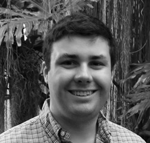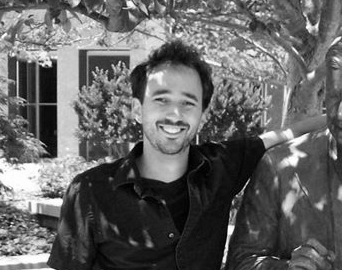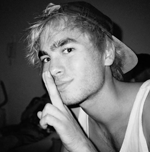Our cultural homogeny is one of those happy myths historians gravitate to. The spinal column that any history of a place is based upon, regardless of its inadequacies to describe what it meant to be alive in a moment that was teeming in incalculably different directions.
It’s sobering, then, to experience an instance where everyone seems to be on the same page. Despite our differences, our disparate parts sanded down and crammed together and dancing on the pinhead of a convenient lie.
It can be exciting, like living in Richmond in 2008 on the night Barack Obama was elected president. When the entire city seemed to take to the streets in celebration. It didn’t matter who we were during the day or in our private lives: we knew we had witnessed something profound, a sea change we collectively believed in, and the energy in the air that night was impossible to describe, only that we were experiencing one of the bones that makes up history. One of those “all of us” moments historians can confidently rely upon to describe the evolution of a place.
Nevermind that it wasn’t all of us. That some people stayed unhappily inside by the TV, feeling a dread that their guy lost. Some people stayed in their dorm rooms, happily oblivious to the contours of politics, adrift in tides they neither cared to control nor believed they could.
That some people only took to the streets to party. That others were still working, strapped in behind their cash registers or food trays.
That I’m sure someone died, that a baby was born, that life went on and followed its natural rhythm, despite the invisible power of our energy.
That the world didn’t really stop, only it felt like it did.
This is how myths are born, and though the results of popular elections are more happy myths, the stuff that public school textbooks can comfortably rely on to sculpt narratives, there are unhappy myths, too.
These are the dark stories, the ones that begin in a once upon a time of fear.
If you were a kid in August of 1966, you surely remember Charles Whitman, in one form or another. Scratchy television boogieman if you were lucky enough to be out of Texas; real life monster if you were there, the day he climbed up the water tower and started shooting people at random with a sniper rifle.
If you were a kid in the late fifties, you remember Charles Starkweather and his spree killer road trip that resulted in two months of chaos and has been immortalized countless times, on Springsteen’s “Nebraska” album, in the Terrence Malick film “Badlands”, cultural debries organizing themselves as art and proving that fear can impact a generation.
These guys, like the Zodiac killer, like Charles Manson, wounded culture because what they did was random. You couldn’t explain it, and so maybe you couldn’t defeat it. All they did was result in death, and then the lingering half-life of radioactive fear. Purposeless fear, that the color codes growing up in the 2000s came to reflect.
Terrorism, without reason to exist other than perpetuating terror.
An old story, and one that’s been around for a long time.
And yet, for some people, it seems that terrorism never really had a face until 2001.
For these Americans, the newly ubiquitous face of terror was Arabic and easy to swallow. Those who weren’t of Arab decent, maybe. Who didn’t have ties to the Middle East, who weren’t Muslim, who ignored the diversity of the firefighters climbing the towers. The diversity of the victims trapped inside. Americans for whom the terrorism of the past seemed disjointed and without broader implications, but who now believed they could recognize evil with their own eyes, regardless of whether or not the object of their gaze belonged to a loser’s club like ISIL or Al Queda. Who now believed that they should.
Sadness and anger and trauma inspire vigilance, but they also wound and they warp, and this new trauma pulled taught the through line from 1950s Japanese internment camps to the here and now, inviting some people to forget that terror doesn’t have a stable identity. That if you pull that line hard enough, terror starts to look a lot like you.
That it looked quite different to the Japanese families who were rounded up by the US government and marched to Camp Harmony.
That it looked different to black families growing up in the south at any point in the greater part of the twentieth century. Families who’d wake up in the dead of night to the sounds of Klansmen pooling outside of their homes, smashing in windows, destroying property. Lynching those who were unlucky enough to be caught alone.
Photographs capture the time: communities of smiling, happy white faces surrounding the body of black men, hung dead from trees.
Those wounds don’t heal over night. Are still fresh in the impossible length of history, and the terrorism in those pictures has an identity, it has a face, it has a focal point. It wasn’t random, even if it was invisible to some people. It wasn’t new. It wasn’t Arab.
The death of Matthew Shepard speaks to terrorism that reverberates along a specific string silent to some but crushingly loud to others.
And anyone who’s ever experienced any form of assault, for reasons impossible to enumerate completely here, knows of personal terrorism. Terrorism with a face, with an identity.
Like the snake in Eden, terrorism is not new. It lives with us, all the time.
What I’d like to do is speak for my generation, as ill advised as it is, and say that terrorism has a face for me, too, and a lot of people my age. A face that materialized before 9/11.
By the time the face of terrorism emerged in my life, I had already gone through most of elementary school with classmates and friends who were diverse enough that monolithic ideas of terrorism haven’t ever really taken root in my brain. I hope they don’t.
I think my generation of nineties kids grew up on a steady diet of morals that praised diversity and the inherent value of a collective of differences, and I think a lot of us are inured to certain specific bigotries of the past because of it.
That isn’t to say we are somehow divorced from our history, or prejudice; we are participants in a messy human drama still unfolding, and none of us are really islands from it. Personal experience, too, can sometimes underscore ideas about people, can calcify prejudice in the way only trauma can; the gruesome “X” factor constantly prepared to wage war against progress. So this isn’t to highlight “better” or “worse” only to speak from what I think is true.
And what is true for me is that terrorism looks to me like high school kids in trench coats with machine guns walking through the cafeteria.
Those kids happen to be white, happen to be male; happen to look a lot like me, and I knew that when it happened.
I remember reading the newspapers in the wake of Columbine, an elementary school kid looking at a possible future. Growing up and becoming these sad monsters, or growing up and dying because of people like them.
9/11 would happen shortly after, the DC Snipes shortly after that. All more local than Columbine, but I was older, older enough that they were somehow easier to comprehend, for all of their messy horror.
I remember looking at the raisin faced horrorshows who’d kidnapped Elizabeth Smart after that, and it stung me because she could have been a sibling of mine. An actual sibling, my sister, was at Virginia Tech after that, on the day of the shootings. Terror had a way of getting closer all the time.
And yet, it looked so definitive to me as a child watching news coverage of Columbine.
I would go to school and wonder if it would happen. I’d wonder who would do it, which of these kids who I’d grown up knowing, who I’d spent my whole life with.
And it was impossible to tell, maybe because those boys looked just like me, and when something you fear looks like you you start to assume anyone, anywhere, could be untrustworthy, anyone could be an Other, someone they didn’t claim to be. Terrorism didn’t have a face, because otherwise that face would be mine.
No, it just wore a mask.
This is Red Scare, “Who Goes There?”, Joseph McCarthy territory, that did and does cast a shadow over my generation, a generation full of shadows, full of true night terror.
But this was sort of like Genesis for terrorism in my life.
I’d travel to Colorado for the first time in college, with my girlfriend, visiting her father who lived up in the mountains about two hours from Littleton.
I remember standing outside of a shut down high school on a summertime Saturday, as my girlfriend took pictures of a Colombine flower, and I remember distinctly wandering to a spot where I could be alone and wondering if I could feel it, fluttering in the air, lurking in the DNA of that soft mountain breeze.
That strand of misery that must have driven those boys to do what they did.
Now this is about as reasonable as standing in Doswell, Virginia and trying to feel the political lint picking of Washington, DC, some impossibly congested two hours away. I was an art student and I’m not sure I was known for any sort of practical intelligence.
But I think it was the sort dreamy, imaginative naivete that spoke to something deeper: that I couldn’t figure out how people who looked just like me could have done something like that. I didn’t know if that potential was somewhere inside myself, like a toxic slug, a murderous tapeworm from hell.
The silver lining of that is that I don’t think terrorism has a face. Only ingredients, invisible from the outside, that can turn people into monsters.
I fear that, if my introduction to the idea of terrorism had looked radically different than myself, I would have prescribed monstrosity to that difference and not thought twice about it.
I might not be giving myself enough credit. Or maybe I’m not giving enough credit to the stupid impulse towards prejudice that continues to tear us apart, even in 2016.
I’m not sure.
I do know I was sitting in the IMAX theater at the Air and Space Museum for the midnight premiere of the Dark Knight Rises, and I don’t think I’ve ever hated someone I didn’t know with the intensity that I hated that guy when I read about it the next morning.
At least not since what had happened at Tech.
Someone who had infiltrated my family, this time nerds just like myself, gathering to see the final installment of the film trilogy that enthralled our generation.
That rhapsodical deification of art should have been enough. We were worshippers, in a way.
And here, he looked just like me, too. College kid, close in age. People were saying he wanted to emulate the Joker, and suddenly our slack-jawed deification of art seemed bad. This is how Marilyn Manson fans must have felt in the nineties, that our escape valves were toxic, that our religion was no good.
This must be how American Muslims feel today, on an infinitely broader, more terrifying level. That their religion is the problem.
Maybe what Mormons felt when those monsters were arrested for what they’d done to Elizabeth Smart.
That our straightness is the problem, our whiteness, our masculinity. The thing is, every terrorist has an identity, a cluster of traits that resemble characteristics you and I have, as well.
And yet we don’t have the one thing in common, the only thing that really matters: that impulse towards cruelty, towards murder, towards destruction, towards inspiring hate and fear.
I’m still not sure, in my heart of hearts, that I trust where that comes from, only I don’t think it’s unique to religion, or to cultural taste, or to skin color or gender identity or anything like that.
It’s more complex: a vast net of ingredients, bubbling away internally. Economic, chemical, memetic, experiential, et cetera, et cetera, ad nauseum, and every time we assume one of these shadow people represents other people who happen to share certain traits, we’re forgetting something very basic:
That shadows only crop up when something is blocking the sun.
So let’s do our best to recognize the sunlight and to respect its prevalence. Do our best to ensure there is as little obstruction as possible. Do our best to not see the shadows in other people, to not obsessively peer into the dark, to not inspire darkness, through hate and prejudice, that wasn’t there before.
Do our best to not smother the sun.
After all, if you search all over for darkness, all you’ll find there is more of the same.
And if you surround yourself in dark thoughts and cast shadowy suspicion, you might wind up wearing a mask you never thought could fit in the first place.



